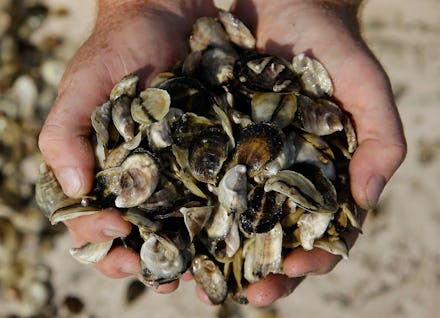Flesh-eating Bacteria Death in Maryland 2016: What to know about Vibrio vulnificus

On Sept. 15, Michael Funk died four days after Vibrio vulnificus, a flesh-eating bacteria that occurs naturally in slightly salty, warm water, entered a cut in his leg.
Man's death from flesh-eating bacteria like a "horror movie"
His wife told the Daily Times it was "like something out of a horror movie" when the bacteria caused lesions and open sores all over his body. Doctors were quick to diagnose Funk with vibriosis, a disease caused by about a dozen of Vibrio bacteria species, according to the Centers for Disease Control and Prevention.
What is Vibrio vulnificus?
Vibrio vulnificus, which Funk contracted, is considered the most severe strain from the Vibrio family, to which the strain that causes cholera — Vibrio cholerae — also belongs. But unlike cholera, Vibrio vulnificus isn't spread from one person to another. Instead, it lives in warm, coastal waters, according to the CDC. Illness from infection can be treated with antibiotics, though sometimes, as in Funk's case, a limb may need to be amputated.
How common are infections from Vibrio vulnificus?
Vibrio strains cause roughly 80,000 illnesses in the U.S. every year, usually bringing with them diarrhea and vomiting. The CDC reports about 90 cases are Vibrio vulnificus — rare, sure, but much more dangerous. The symptoms are acute illness that leads to fast health decline, fever, low blood pressure, septic shock, as well as swelling, blisters and pain at the site of infection, according to the CDC. Symptom onset can occur just a couple days after exposure, or as far out as a week in rare cases.
How climate change impacts Vibrio vulnificus
It's alarming enough that a man could die within four days of ocean water getting into an open cut. But what's especially scary is that Vibrio strains around the U.S. are on the rise — and it's most likely due to climate change.
According to a study published in August, the warming of our planet's sea surface temperature is "strongly associated with spread of Vibrios," inciting a rise in human diseases caused by Vibrio pathogens.
Here's the problem: When ocean temperatures rise, that creates warm, briny conditions — practically a spa for Vibrio. And considering how the planet is constantly breaking heat records, we're going to continue to see sea temperatures rise — and, potentially, usher in even more cases like Funk's.